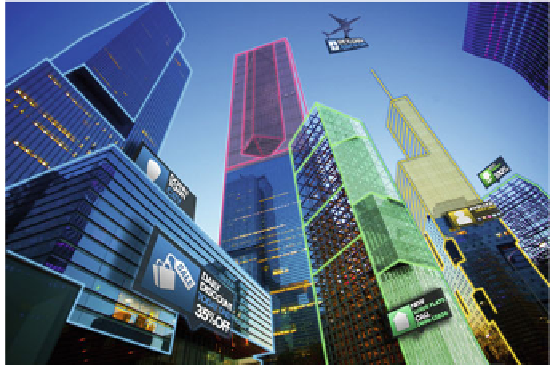Graphics Reference
In-Depth Information
Fig. 7.19
Augmented city
time with outstanding user experience, running 24
7 on your personal mobile device.
On current mobile devices this is not possible due to limited performance and battery
resources. Dedicated HW resources for CV and AR are required to get to the needed
performance and power efficiency. Additionally, they would offload the CPU to make
it available for pure application-related tasks. Running AR with instant and robust
recognition and tracking at 30 fps at around 10mWwill enable full day AR use cases,
which are needed to make AR applications like visual navigation, AR gaming, and
real-time AR UI useful to the end-user. To reach this goal, the full AR detection
and tracking pipeline needs to be fully implemented in HW and optimized at system
level. The AR engine fromMetaio [
6
] is an early example for such optimization and
acceleration (Fig.
7.19
).
/
References
1. AzumaRT (1997)Asurvey of augmented reality. Presence: TeleoperatorsVirtual Env 6(4):355-
385 (Earlier version appeared in Course Notes #9: Developing Advanced Virtual Reality Appli-
cations, ACM SIGGRAPH '95 (Los Angeles, 6-11 August 1995), 20-1 to 20-38.)
2. Bay H, Ess A, Tuytelaars T, Van Gool L (2008) SURF: speeded up robust features. Comput
Vis Image Underst (CVIU) 110(3):346-359

